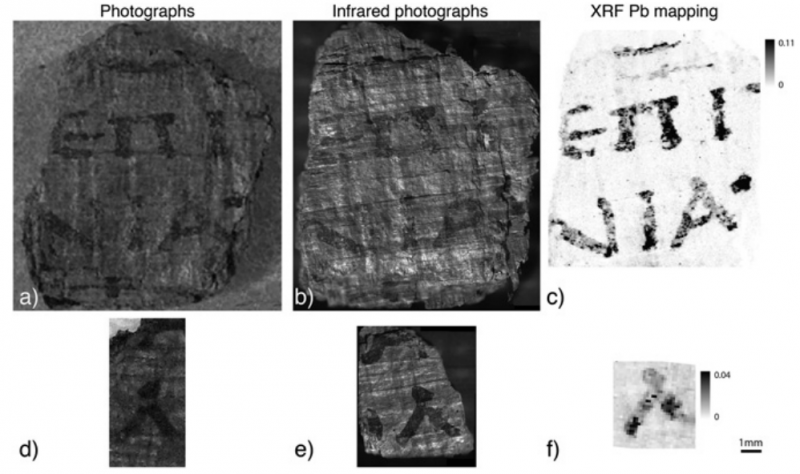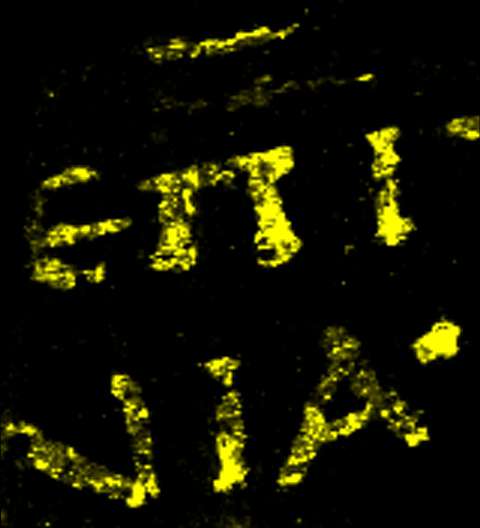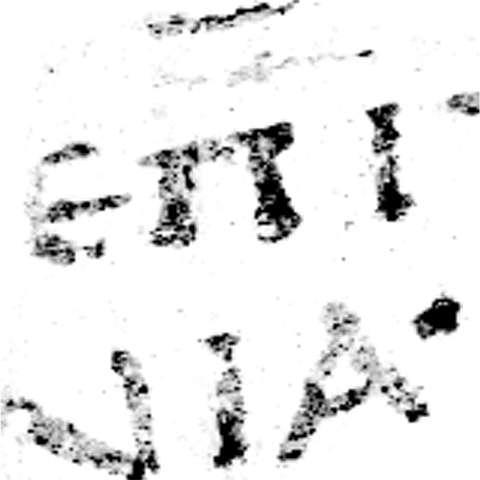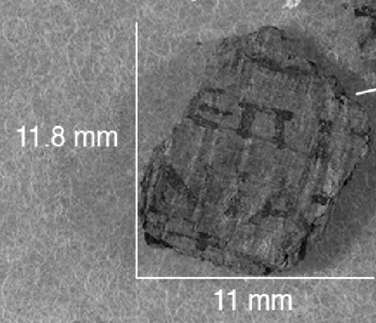March 22, 2016 report
Lead found in ink used to write scrolls buried by eruption of Mount Vesuvius

A team of European researchers has found evidence of lead in the ink used by early Greeks when writing on papyrus scrolls in the town of Herculaneum, near Mount Vesuvius. In their paper published in Proceedings of the National Academy of Sciences, the group describes their efforts in analyzing the ancient scrolls, and note that the finding pushes back the date of first use of metals in ink by four or five hundred years.
For several hundred years, before the dangers of lead were known, lead and other metals were added to ink to aid in color improvement, binding and consistency. But until now, it was believed this practice didn't start until approximately the fourth or fifth centuries AD—prior to then, inks were primarily carbon based. In this new effort, the researchers were studying scrolls that were charred and then covered when Mount Vesuvius erupted in 79 AD, burying the town, and of course nearby Pompeii as well.
Hundreds of scrolls were found in an ancient library in the town by archeologists in the 1700's, many of which were destroyed as researchers attempted to unfold and read them. Since that time, multiple attempts have been made to read the remaining scrolls using technology that might allow them to be read without unrolling them, such as a CT scanner. The new effort was not aimed at trying to read the letters on the scrolls, but rather to learn more about the makeup of the ink that was used. The team used a type of X-ray generated by a synchrotron, a type of particle accelerator, to examine two scroll fragments and found evidence of lead particles in the ink of both of them.

The researchers believe the concentrations of lead in the ink were high enough to rule out inadvertent introduction via lead in the water base or the container used to hold it. They believe also that such high concentrations should make it possible to use other technology to read the letters on the rolled scrolls. Such experiments are currently being orchestrated and are scheduled to take place as early as this summer. Also, because the exact dates of the scrolls themselves are still unknown, it is possible they were created hundreds of years before they were buried, which would push back the date of first use of metal in ink, even further.
More information: Emmanuel Brun et al. Revealing metallic ink in Herculaneum papyri, Proceedings of the National Academy of Sciences (2016). DOI: 10.1073/pnas.1519958113
Abstract
Writing on paper is essential to civilization, as Pliny the Elder remarks in his Natural History, when he describes the various types of papyri, the method of manufacturing them, and all that concerns writing materials in the mid-first century AD. For this reason, a rigorous scientific study of writing is of fundamental importance for the historical understanding of ancient societies. We show that metallic ink was used several centuries earlier than previously thought. In particular, we found strong evidence that lead was intentionally used in the ink of Herculaneum papyri and discuss the possible existence of ruled lines traced on the papyrus texture. In addition, the metallic concentrations found in these fragments deliver important information in view of optimizing future computed tomography (CT) experiments on still-unrolled Herculaneum scrolls to improve the readability of texts in the only surviving ancient Greco-Roman library.
Journal information: Proceedings of the National Academy of Sciences
© 2016 Phys.org





















